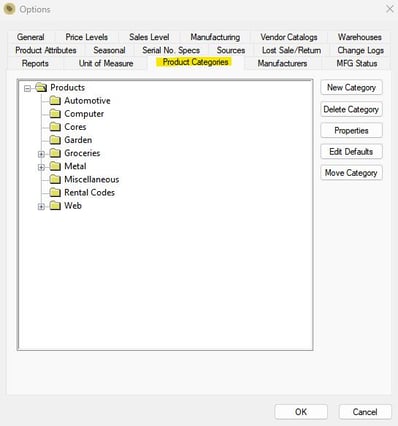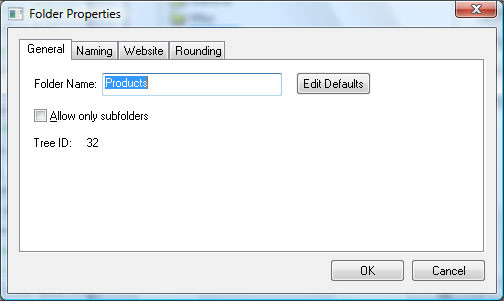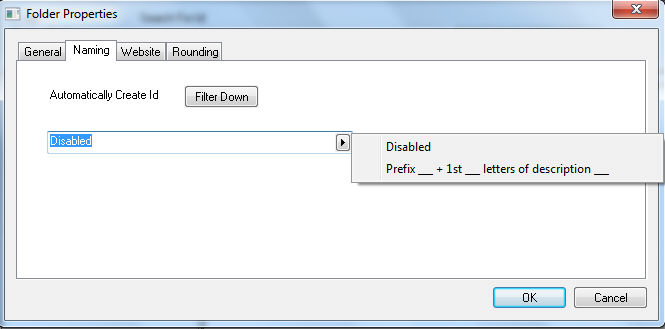- EBMS Knowledge Base
- Inventory
- Product Catalog
-
Client Resources
-
EBMS Main Documentation
- Introduction
- Getting Started
- Getting Started | Initial Installation
- Getting Started | Company Setup
- Quick User Guide | Financial Staff | Accountant
- Quick User Guide | Financial Staff | Accountant | Accountants Journal
- Quick User Guide | Sales Staff
- Quick User Guide | General Staff
- Features
- Reports
- Security
- Server Manager
- Technical
- Technical | Data Import and Export Utility
- Technical | SQL Mirror
- Automotive
- Automotive | Parts Catalog
- Automotive | Pricing
- Automotive | Point of Sale
- Automotive | Product Application
- Automotive | Keystone Interface
- Metal Supply
- Fuel Sales
- Horticulture
- Horticulture | Farm Setup
- Horticulture | Processing Payroll
- Horticulture | Managing the Farm
-
Sales
- Introduction
- Customers
- Customers | Miscellaneous Customers
- Proposals
- Proposals | Processing Proposals
- Proposals | Sets and Templates
- MyProposals
- MyOrders
- Sales Orders
- Invoices
- Materials Lists
- Sales and Use Tax
- Sales and Use Tax | TaxJar
- CRM
- CRM | Auto Send
- Recurring Billing
- Credits
- Customer Payments
- Payment Card Processing
- Payment Card Processing | Gift Cards
- Payment Card Processing | Loyalty Cards
- Payment Card Processing | Verifone Gateway
- Freight and Shipping Tools
- General Ledger Transactions
- Point of Sale
- Point of Sale | Point of Sale Hardware
- Point of Sale | Xpress POS System
- Point of Sale | Advanced Tools
- Signature Capture
- Salesperson Commissions
-
Inventory
- Product Catalog
- Product Catalog | Using Product Codes for No Count Items
- Product Pricing
- Product Pricing | Special Pricing
- Tracking Counts
- Unit of Measure
- Purchasing
- Special Orders and Drop Shipped Items
- Receiving Product
- Barcodes
- MyInventory and Scanner
- Components (BOM) and Accessories
- Components (BOM) and Accessories | Component Formula Tool
- Made-to-Order Kitting
- Configure-to-Order Kitting
- Multiple Inventory Locations
- Multiple Inventory Locations | Creating Locations
- Multiple Inventory Locations | Using Multiple Locations
- Multiple Inventory Locations | Product Catalog Sync
- Multi-Vendor Catalog
- Serialized Items
- Serialized Items | Purchasing or Manufacturing an Item
- Serialized Items | Selling and/or Associating an item with a customer
- Lots
- Product Attributes
- Product Attributes | Selling and Purchasing Items with Attributes
- Product Attributes | Custom Attributes
- Mobile Scanner (Legacy)
-
Labor
- Getting Started
- Workers
- Taxes and Deductions
- Work Codes
- Time and Attendance
- Time and Attendance | Time Track App
- Processing Payroll
- Closing the Payroll Year
- Processing Payroll - Advanced
- Salaried Pay
- Piecework Pay
- Direct Deposit
- 3rd Party Payroll Service
- Subcontract Workers
- Flag Pay
- Prevailing Wages
- MyDispatch
- MyTasks
- MyTime
- MyTime | Communications
- MyTime | Setup
- Tasks
- Tasks | Getting Started
- Tasks | Creating Tasks
- Tasks | Scheduling Tasks
- Tasks | Customizing Task Views
- Tasks | Managing Tasks
-
Financials
- Introduction
- Fiscal Year
- Chart of Accounts
- Budget
- Financial Reporting
- Transactions and Journals
- Transactions and Journals | Journals
- Account Reconciliation
- 1099
- Departments and Profit Centers
- Fund Accounts
- Bank Accounts
- Bank Feed
- Vendors
- Vendors | Miscellaneous Vendors
- Purchase Orders
- Expense Invoices
- Vendor Payments
- AP Transactions
- Landed Cost
- Fixed Assets and Depreciation
- Fixed Assets and Depreciation | Fixed Assets
- Fixed Assets and Depreciation | Fixed Assets | Adding Assets
- Fixed Assets and Depreciation | Processing Depreciation
- Fixed Assets and Depreciation | Disposing Assets
- MyJobs
-
E-commerce
-
Rental
-
Job Costing
-
Manufacturing
Adding and Deleting Product Categories
The product catalog feature assists in organizing inventory within groups or subgroups much like a product catalog. For example, it may be useful to group all of the service labor items within one folder named service or organize all of the products within a specific department with a single folder. Common settings can be set for all the items within a folder by setting defaults. Review the Changing Inventory Defaults section for more details.
Setting Up Product Categories
Go to the Inventory > Options > Product Categories tab , shown in the following window.

Inventory products within EBMS are organized in categories using folders and subfolders. Additional folders and subfolders can be added as needed to create a catalog-type hierarchical list. Folders will be most helpful if designed in a manner that will facilitate ease of selection for a specific group of inventory items. For example, a hardware store may create different inventory folders for each product line, such as Tools, Auto Parts, Lawn & Garden, or Paint. Additional subfolders may be created to identify different product lines within any department.
Adding a Folder
-
To add a folder, highlight the folder in which the new folder is to appear and click the New Folder button.
-
Enter the Folder Name of the new folder and check the Allow only subfolders switch ON to restrict the new folder to allow only subfolders and not allow inventory items, or turn the switch OFF to allow the inventory items.
-
Press OK to create the new folder.
Deleting a Folder
Click the Delete Folder button to remove a folder. A folder cannot be deleted if there are inventory items in the folder. To delete the folder, the inventory items will need to be moved to another folder. To move inventory items, review the Entering New Products section.
Changing the Name of a Folder
To change the name of a folder, click the Properties button and the following window will appear:

Change the folder name or edit the button of the highlighted folder as necessary. Review [Main] Features > Folder Groups for more details on adding and changing folder lists.
The Tree ID value is used to query or identify the folder. Review [Main] Technical > Set Query Options for instructions to query records based on category or folder.
Click on the Naming tab the system to automatically create IDs when a new inventory item is created within this folder.

Select the Disabled naming option to manually create inventory IDs when an item is created.
Review the Pricing > Rounding Calculated Prices section for more details on the Rounding tab.
